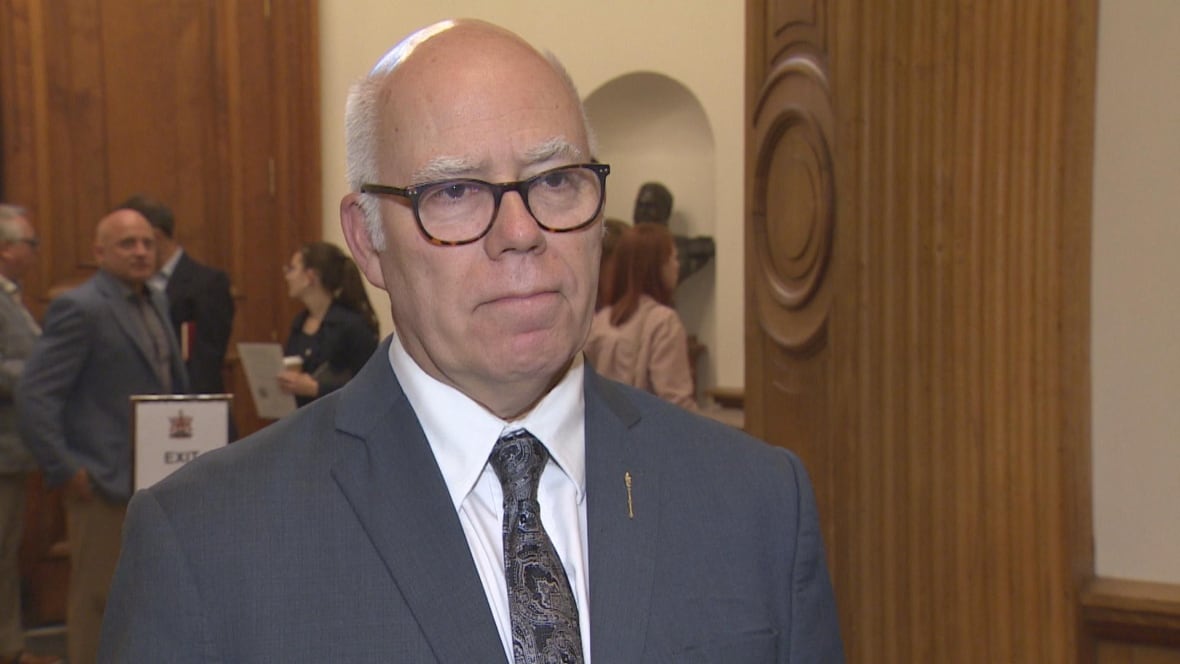TO ANY ADDITIONAL FIRES THAT COULD POTENTIALLY POP UP. NOW, THE RETURNING DRY OFFSHORE WINDS THREATEN TO IGNITE HOTSPOTS IN THESE FIRES, METEOROLOGIST HEATHER WALDMAN IS TAKING A LOOK AT THE CONDITIONS FOR US. HEATHER. YEAH, AND REMEMBER WHEN WE’RE TALKING ABOUT POTENTIAL NEW FIRE STARTS, WIND DOES NOT START FIRES. DRY AIR DOES NOT START FIRES. BUT THOSE CONDITIONS COULD LEAD A FIRE STARTED BY A PERSON, WHETHER BY ACCIDENT OR OTHERWISE. THOSE NEW FIRES COULD START FAIRLY QUICKLY. SO WE HAVE A RED FLAG WARNING UP AGAIN FROM THE MOUNTAINS IN SAN LUIS OBISPO COUNTY, ALL THE WAY DOWN THROUGH INLAND PARTS OF SAN DIEGO COUNTY. THIS IS IN EFFECT THROUGH MIDDAY ON WEDNESDAY. WIND GUSTS, ESPECIALLY OVER THOSE MOUNTAINS AND IN SOME OF THOSE EXPOSED CANYONS OF 30 TO 50MPH, VERY LOW HUMIDITY. AND OF COURSE, THE FUELS. WE JUST HAVEN’T HAD ANY RAIN, REALLY YET THIS SEASON, ESPECIALLY FOR LOS ANGELES AND DOWN INTO SAN DIEGO. THERE IS AN AREA OF VENTURA COUNTY AND PARTS OF LOS ANGELES COUNTY THAT FORECASTERS ARE MORE CONCERNED ABOUT, BECAUSE THE WINDS COULD BE EVEN HIGHER, WINDS ON THEIR OWN MAY GUST UP TO 70MPH, AND EVEN WITHOUT A FIRE START, THAT COULD LEAD TO WIND DAMAGE. AGAIN. THIS IS PARTS OF VENTURA COUNTY, THE SAN FERNANDO VALLEY, AND UP INTO THE SANTA CLARITA AREA OF LOS ANGELES COUNTY. BUT I WANT TO POINT OUT HERE, THIS IS THE AREA BURNED BY THE PALISADES FIRE. THIS IS THE AREA BURNED BY THE EATON FIRE. SO BOTH WITHIN THAT RED FLAG WARNING AREA, BUT NOT WITHIN THE AREA WHERE WE’RE EXPECTING THE STRONGEST WINDS. STILL, FIRE CREWS HAVE MADE REALLY GOOD PROGRESS ON THESE FIRES OVER THE LAST COUPLE OF DAYS, AS EVIDENCED HERE, THE SATELLITE PICTURE NOT SHOWING ANY SMOKE. IT’S NOT TO SAY THAT THERE AREN’T HOT SPOTS OR THAT NOTHING IS BURNING, BUT THAT’S A REALLY GOOD SIGN THAT THE FIRES HAVE REALLY LAID DOWN COMPARED TO WHERE WE WERE A WEEK AGO. HERE ARE THE NUMBERS ON THE PALISADES FIRE. THE FIRST TWO DAYS BURNING OVER 19,000 ACRES OVER THE PAST FEW DAYS, FIRES CONTINUE TO CRAWL ALONG, GROWING BY ABOUT 1300 ACRES EACH OF THE PAST FEW DAYS. BUT SO FAR TODAY, NO NEW GROWTH. SO WE’LL SEE IF THE WINDS IMPACT THOSE FIRES THERE. BUT PROGRESS
‘PDS’ warnings were made to grab attention in tornadoes, hurricanes, and now wildfires.
The National Weather Service’s Los Angeles page screams “Particularly Dangerous Situation (PDS)” in hot pink letters against a gray background.It’s a rare warning aimed at seizing attention ahead of extreme wildfire risk that’s predicted to start in Southern California at 4 a.m. (1200GMT) Tuesday. Related video above: Red Flag Warning | The conditions that could impact the fires in LA CountyPDS warnings were first used to warn of tornado outbreaks in the Midwest. More than a decade ago, three meteorologists proposed expanding their use to disasters such as ice storms, floods, hurricanes, and now wildfires.Grabbing attention”It catches the attention, it really heightens that awareness and the need to really act at that point,” said one of those scientists, Jonathan Howell.The hope was that the phrase would “become synonymous with extreme weather events” and also could be used for emergencies such as hurricanes and snowstorms, Howell and two colleagues wrote for a presentation at a 2011 conference of the American Meteorological Society.“I definitely think this has made an impact and has saved lives over the years,” said Howell, who is the science and operations officer at the weather service’s Mobile, Alabama office.Past warningsThe weather service’s Storm Prediction Center — whose mission is to provide “forecasts and watches for severe thunderstorms and tornadoes” — says that the term was first used on April 2, 1982 by forecaster Robert H. Johns, in conjunction with a tornado watch.That came after a “failed attempt in the late 1970s,” Johns said in an interview in the Electronic Journal of Severe Storms Meteorology. Meteorologists had alerted the public to a “big next day,” only to see no severe weather, he said.Today, meteorologists have better tools to predict catastrophic weather outbreaks than they had in the 1970s and 1980s and forecasters can more reliably issue severe warnings, Howell said.The PDS term appeared in newspaper articles such as an April, 1, 1983 Associated Press story about a widespread storm system that caused a blinding dust storm in West Texas.PDS warnings for wildfiresDuring the first week of November last year, as Santa Ana winds fueled the Mountain Fire northwest of Los Angeles, the National Weather Service issued a PDS warning. Forecasters called the threat “extreme and life-threatening.”Then, on Dec. 9, residents of Los Angeles and Ventura counties were again warned of a “particularly dangerous situation” as Santa Ana winds roared through the mountains.
The National Weather Service’s Los Angeles page screams “Particularly Dangerous Situation (PDS)” in hot pink letters against a gray background.
It’s a rare warning aimed at seizing attention ahead of extreme wildfire risk that’s predicted to start in Southern California at 4 a.m. (1200GMT) Tuesday.
Related video above: Red Flag Warning | The conditions that could impact the fires in LA County
PDS warnings were first used to warn of tornado outbreaks in the Midwest. More than a decade ago, three meteorologists proposed expanding their use to disasters such as ice storms, floods, hurricanes, and now wildfires.
Grabbing attention
“It catches the attention, it really heightens that awareness and the need to really act at that point,” said one of those scientists, Jonathan Howell.
The hope was that the phrase would “become synonymous with extreme weather events” and also could be used for emergencies such as hurricanes and snowstorms, Howell and two colleagues wrote for a presentation at a 2011 conference of the American Meteorological Society.
“I definitely think this has made an impact and has saved lives over the years,” said Howell, who is the science and operations officer at the weather service’s Mobile, Alabama office.
Past warnings
The weather service’s Storm Prediction Center — whose mission is to provide “forecasts and watches for severe thunderstorms and tornadoes” — says that the term was first used on April 2, 1982 by forecaster Robert H. Johns, in conjunction with a tornado watch.
That came after a “failed attempt in the late 1970s,” Johns said in an interview in the Electronic Journal of Severe Storms Meteorology. Meteorologists had alerted the public to a “big next day,” only to see no severe weather, he said.
Today, meteorologists have better tools to predict catastrophic weather outbreaks than they had in the 1970s and 1980s and forecasters can more reliably issue severe warnings, Howell said.
The PDS term appeared in newspaper articles such as an April, 1, 1983 Associated Press story about a widespread storm system that caused a blinding dust storm in West Texas.
PDS warnings for wildfires
During the first week of November last year, as Santa Ana winds fueled the Mountain Fire northwest of Los Angeles, the National Weather Service issued a PDS warning. Forecasters called the threat “extreme and life-threatening.”
Then, on Dec. 9, residents of Los Angeles and Ventura counties were again warned of a “particularly dangerous situation” as Santa Ana winds roared through the mountains.
#PDS #warnings #grab #attention #tornadoes #hurricanes #wildfires











Leave a Reply